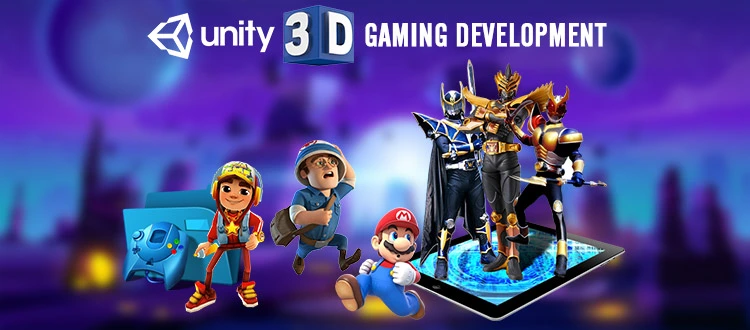iOS Game Development: A Gateway to Engaging Mobile Experiences
Mobile gaming has surged in popularity, with millions of users turning to their smartphones for entertainment. Among the various mobile platforms, iOS stands out as a premium ecosystem for game development. With the power of cutting-edge hardware, a refined user experience, and access to a lucrative marketplace, iOS game development is a golden opportunity for developers and companies to build successful mobile games. In this blog, we’ll explore the significance of iOS game development, the various iOS game development services available, and what to look for in an iOS game development company. The Rise of iOS Game Development The Apple ecosystem, particularly with iPhones and iPads, has long been a favorite for developers. One of the key reasons is the technical capabilities of iOS devices. Each iPhone or iPad iteration brings improved processing power, graphics performance, and enhanced storage, which gives developers the tools they need to create highly engaging games. The App Store, where iOS games are distributed, is renowned for its strict quality control, ensuring that only the best games are showcased to users. In the iOS ecosystem, games have a broad range, from hyper-casual games with simple mechanics to immersive 3D games that push the limits of mobile hardware. This diversity is a result of the rich development environment Apple offers. What is iOS Game Development? iOS game development is the process of designing, building, testing, and deploying games specifically for Apple devices, like the iPhone and iPad. Developers use a variety of tools, including Apple’s proprietary programming languages (like Swift) and frameworks (such as SpriteKit and Metal), to create games that can take full advantage of the hardware. iOS game development includes several stages: Concept and Design – Before any coding begins, developers define the concept of the game, create storylines (if applicable), and design the game environment, characters, and overall gameplay. Development – Using programming languages such as Swift or Objective-C, developers write the code that dictates how the game functions. Tools like Xcode, Apple’s integrated development environment (IDE), help streamline this process. Testing – Games must be tested rigorously to identify and fix bugs or glitches. This ensures that the game runs smoothly on different iOS devices and meets Apple’s stringent standards for quality. Launch and Maintenance – Once the game is developed, it’s released on the App Store. After the launch, continuous maintenance is necessary to address user feedback, patch bugs, and release updates or additional content. Essential iOS Game Development Services Developing a successful game involves more than just coding. There are various iOS game development services available that help optimize every phase of game creation: Game Design: Designing the visuals, user interface, and overall gameplay is crucial to the success of a game. A good iOS game design service focuses on making the game intuitive and visually appealing while also creating an enjoyable experience for the players. Prototyping and Conceptualization: Before full development begins, developers often create a prototype of the game. This allows them to refine the game mechanics and see how it will function in real-time. Prototyping helps ensure that the final product meets the desired goals and is fun to play. Custom iOS Game Development: Each game has unique requirements. Whether it’s an indie game or a more complex multiplayer platform, custom game development services tailor the game to specific needs, ensuring that it stands out in a crowded marketplace. Cross-Platform Development: Many developers want their game to work on more than just iOS. Cross-platform game development ensures that a game can be ported easily to Android or even desktop systems. However, even in cross-platform projects, optimizing the game for iOS devices remains a key focus. Monetization and In-App Purchases (IAP): Developers can choose various business models to monetize their games, such as freemium, ads, or in-app purchases. Integrating these models correctly into a game can help it generate revenue while still providing value to players. Game Testing and QA: Quality assurance (QA) services ensure that a game is free from bugs and glitches before release. Game testing on different iOS devices is critical, as each device might have different hardware configurations that can affect game performance. App Store Optimization (ASO): Once the game is developed, it needs to be marketed correctly to be successful. ASO services help improve a game’s visibility in the App Store through optimized descriptions, keywords, and appealing visuals like icons and screenshots. Post-Launch Support and Updates: A game’s lifecycle doesn’t end with its release. Continuous post-launch support and updates are crucial to keeping a game fresh and engaging. Regular updates can include bug fixes, performance enhancements, and additional content like new levels or characters. Why Partner with a Professional iOS Game Development Company? Choosing the right iOS game development company is crucial to a game’s success. Whether you are an indie developer with a vision or a business aiming to expand into the mobile gaming industry, working with professionals can make a significant difference. Here are some reasons to consider: Expertise in iOS Ecosystem: A professional iOS game development company has in-depth knowledge of Apple’s frameworks, tools, and hardware. This ensures that your game will be optimized for iOS devices, delivering the best possible user experience. Full-Cycle Development: Many companies offer full-cycle development services, which means they handle everything from initial concept to post-launch updates. This saves time and ensures that the game’s development stays consistent and aligned with the vision from start to finish. Experienced Teams: An experienced iOS game development company typically has a multidisciplinary team of game designers, developers, artists, and testers. This helps cover all aspects of the game, from technical performance to user engagement and design. Cost Efficiency: While it may seem like a significant investment to hire an iOS game development company, in the long run, it often proves cost-efficient. They can minimize the trial-and-error phase, avoid costly mistakes, and deliver a game that’s market-ready. Access to Cutting-Edge Technologies: Professional iOS game development companies stay up-to-date with the latest technologies, trends, and updates in the Apple










